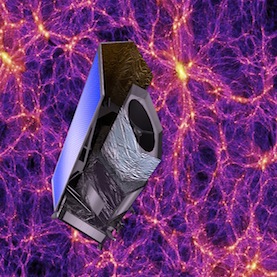By Caleb A. Schar
There is something beautiful yet ominous about our nearest large galactic neighbor.
The Andromeda galaxy is a trillion star behemoth that spans some six times the diameter of the full Moon when seen through a telescope. At only 2.5 million light years away from the Milky Way it’s barely an intergalactic stone’s throw from us, and the gravitational might of our two galaxies is pulling them together against the stretching expansion of the cosmos. Every year we get closer by about 2 billion miles. And, as I’ve written about before, in some 4 billion years or so we’ll begin a process of merger, a grand slow-motion galactic collision.
The outcome of this will most likely be a new system, our merged components perhaps dissolving into a giant elliptical galaxy, with stellar orbits thrown into a vast puff. No more Milky Way, no more Andromeda, just distant memories.

But until then we get to observe this beautiful spiral object. Andromeda seems to be producing stars at a slightly slower rate than the Milky Way, but this doesn’t mean it’s devoid of stellar birth. New images from the ESA/NASA space observatory Herschel allow us to map out the cooler interstellar dust and dense regions of star and planet formation by sensing far infrared and submillimeter wavelength radiation from this matter. At these wavebands photons are less attenuated by gas and dust and less confused with starlight, allowing astronomers to peer deep into Andromeda’s nurseries.


